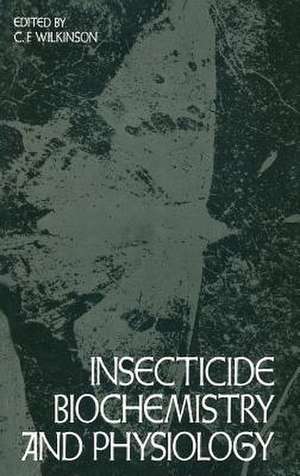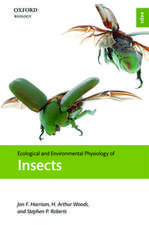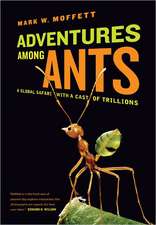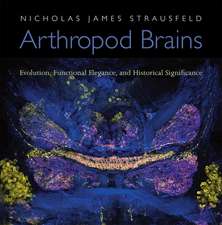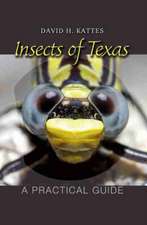Insecticide Biochemistry and Physiology
Autor Wilkinsonen Limba Engleză Hardback – 31 iul 1976
| Toate formatele și edițiile | Preț | Express |
|---|---|---|
| Paperback (1) | 1407.14 lei 6-8 săpt. | |
| Springer Us – 29 iun 2013 | 1407.14 lei 6-8 săpt. | |
| Hardback (1) | 1246.78 lei 6-8 săpt. | |
| Springer Us – 31 iul 1976 | 1246.78 lei 6-8 săpt. |
Preț: 1246.78 lei
Preț vechi: 1520.46 lei
-18% Nou
Puncte Express: 1870
Preț estimativ în valută:
238.60€ • 259.08$ • 200.42£
238.60€ • 259.08$ • 200.42£
Carte tipărită la comandă
Livrare economică 23 aprilie-07 mai
Preluare comenzi: 021 569.72.76
Specificații
ISBN-13: 9780306308727
ISBN-10: 030630872X
Pagini: 768
Ilustrații: XXII, 768 p.
Dimensiuni: 155 x 235 x 43 mm
Greutate: 1.28 kg
Ediția:1976
Editura: Springer Us
Colecția Springer
Locul publicării:New York, NY, United States
ISBN-10: 030630872X
Pagini: 768
Ilustrații: XXII, 768 p.
Dimensiuni: 155 x 235 x 43 mm
Greutate: 1.28 kg
Ediția:1976
Editura: Springer Us
Colecția Springer
Locul publicării:New York, NY, United States
Public țintă
ResearchDescriere
Only four short decades ago, the control of insect pests by means of chemicals was in its early infancy. The pioneers in the area consisted largely of a group of dedicated applied entomologists working to the best of their abilities with a very limited arsenal of chemicals that included inorganics (arsenicals, fluorides, etc.), some botanicals (nicotine), and a few synthetic organics (dinitro-o-cresol, organothiocyanates). Much of the early research was devoted to solving practical problems associated with the formulation and application of the few existing materials, and although the discovery of new types of insecticidal chemicals was undoubtedly a pipe dream in the minds of some, little or no basic research effort was expended in this direction. The discovery of the insecticidal properties of DDT by Paul Miiller in 1939 has to be viewed as the event which marked the birth of modern insecticide chemistry and which has served as the cornerstone for its subse quent developement. DDT clearly demonstrated for the first time the dramatic potential of synthetic organic chemicals for insect control and provided the initial stimulus which has caused insecticide chemistry to become a field not only of immense agricultural and public health importance but also one that has had remarkable and unforseeable repercussions in broad areas of the physical, biological, and social sciences. Indeed, there can be few other synthetic chemicals which will be judged in history to have had such a broad and telling impact on mankind as has DDT.
Cuprins
Penetration and Distribution.- Penetration and Distribution of Insecticides.- Metabolism.- Microsomal Oxidation and Insecticide Metabolism.- Cytochrome P450 Interactions.- Extramicrosomal Metabolism of Insecticides.- Enzymatic Conjugation and Insecticide Metabolism.- Target Site Interactions.- The Nervous System: Comparative Physiology and Pharmacology.- Acetylcholinesterase and Its Inhibition.- The Acetylcholine Receptor and Its Interactions with Insecticides.- Effects of Insecticides on Nervous Conduction and Synaptic Transmission.- Insecticides as Inhibitors of Respiration.- Physicochemical Aspects of Insecticidal Action.- Selectivity and Resistance.- The Biochemical and Physiological Basis of Selective Toxicity.- Biochemistry and Physiology of Resistance.- Insecticide Toxicology.- Teratogenic, Mutagenic, and Carcinogenic Effects of Insecticides.- Insecticide Interactions.- The Treatment of Insecticide Poisoning.- Environmental Toxicology.
